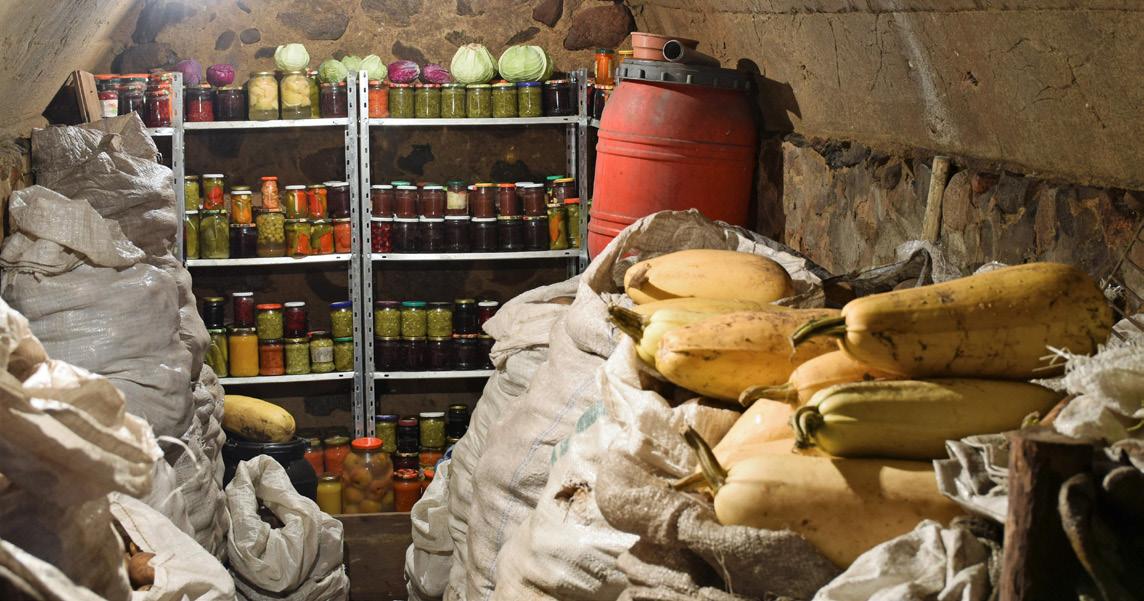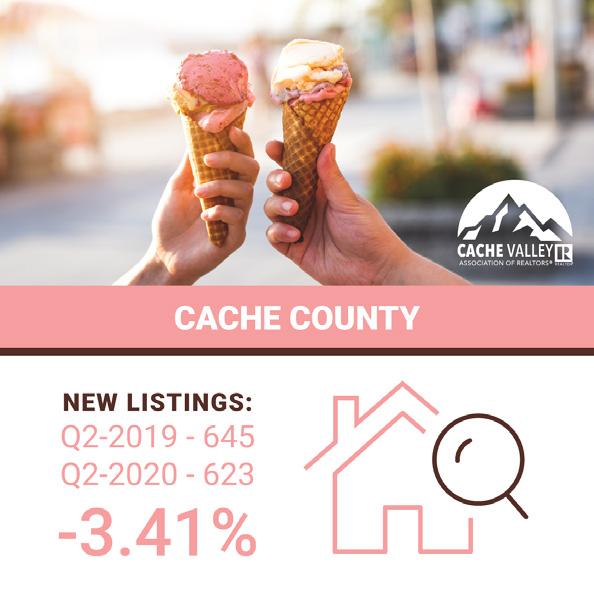
5 minute read
Winter
A Guide to Harvesting and Storing Vegetables for Winter
MARK ANDERSON
Advertisement
DURING THIS TIME of year, we harvest more from our family garden than we can eat. Sure, we give a bunch of it away to family and friends and we take some to the food pantry for those who can use it. Then, we try to can and freeze as much as time allows. Fortunately, many of the vegetables we harvest can be cured and stored for many months in a cold storage room, a cool room in the basement, a cellar, or even in a garage if it doesn’t get too cold. The easiest crops to prepare and store are onions, potatoes, and winter squashes.
This year, I pulled up my onions to prepare them for storage on August 19. Normally they will start to die down by early- to mid-August, but if the tops haven’t started drying up by owner, Anderson’s Seed and Garden around August 15, then you need to encourage them. I gently step on the tops of the onions to break them, and in just a few days the tops have turned yellow and are starting to dry up. At that point, usually around the last week of August, I pull the onions up and lay them on their sides or upside down so the sun will dry the roots. Leave them like that for a few days, and after the roots are dry then the onions will have stopped growing and can be prepared for storage.
Gather up the onion bulbs, leave the tops attached, and place them in a warm, dry location with good air circulation like a barn or a shed — where the sun does not hit them. Leave them in this “curing” location for four to six weeks. During this time the onions will dry, creating a hard, outer-wrapper skin that will protect the onions during storage. After the four to six weeks of curing, trim the tops off the onions, put them in mesh storage bags, and hang them up off the floor in a cool storage space (about 40 to 50 degrees). Depending on the variety of onion, they could keep as long as four to six months.
Potatoes are probably the easiest vegetable to harvest and store. The vines will normally start to die back when the potatoes are ready to harvest. For early potatoes, that is about late July, while later varieties like Pontiac or Yukon Gold will start to die down in late August. Don’t let the potatoes stay in the ground too
Color for Spring! Plant fall bulbs now for amazing spring colors.
Anderson’s Seed and Garden 69 West Center, Logan • 435-752-2345



Cache Valley’s gardening experts!
long into the fall or they will start to grow again, preventing them from hardening off for storage and limiting their storage potential. Dig the potatoes and gather them into containers immediately, as exposure to sunlight will cause them to turn green and lose quality. I usually give the potatoes one day to dry in a shaded location (no direct sunlight), then I sort them into sizes and quality for storage, place them in burlap sacks, and move them to a 40- to 50-degree storage area. Potatoes kept under proper conditions can last up to six or seven months before sprouting. Temperature is the key to keeping potatoes.
Winter squash are my favorite vegetables for storing, probably because they are sweeter as the months go by. I harvest my squash and pumpkins after the first light frost (29 to 32 degrees). Don’t leave them out if the first frost of the fall is hard (28 degrees or lower) as it can damage the fruit and cause them to deteriorate rapidly in storage. Cut the fruit from the vine leaving a two- to three-inch stem. At this point, I place them in a warm, dry location, like a barn or a shed, where the sun does not shine directly on them, similar to how we store onions. After a few weeks, the skins will harden and should show full fall coloring. Scrape the exterior of the squash with your fingernail, and if moisture bubbles up to the surface, they need to be dried a little longer. If the skin is hard and dry, then the squash is ready to go to the storage area. Place the squash on a pallet or a crate to

provide good air circulation and store them at 40 to 50 degrees until use. Most winter squash will store for four to six months.
There’s nothing better than eating your own fresh vegetables throughout the winter. The next best thing is eating someone else’s fresh vegetables that you’ve stored for the winter. Don’t feel any shame if you go to the gardener’s market or a roadside stand to buy squash, potatoes, or onions to store for winter. It works just as if you grew them yourself. It will boost your winter food storage by months and provide some nutritious and delicious options you wouldn’t have otherwise. Get out there and harvest that bounty that fall provides and let’s keep it around, the oldfashioned way, to use all winter long.
TM

-Sewing Machine Service & Repair -Virtual Classes, Events and Retreats -Fabric and Wool + Kits! -Patterns, Books & Notions -Sew-Til-You-Know Owner Classes -Drop-Off Longarm Services -Kimberbell Certified Shop
$25.00 OFF your $100 purchase Some exclusions apply. Valid thru December 31, 2020.
MyGirlfriendsQuiltShoppe.com
LOGAN, UT 1115 N 200 E #230 Logan, UT 84341 435-213-3229
SANDY, UT 9269 S. Village Shop Drive Sandy, UT 84094 801-647-7739











